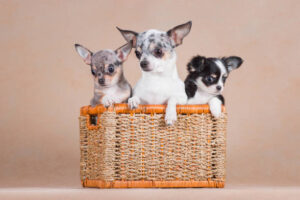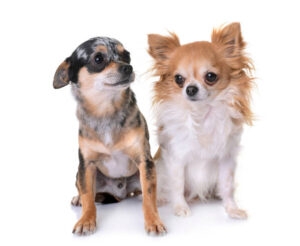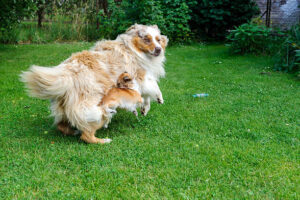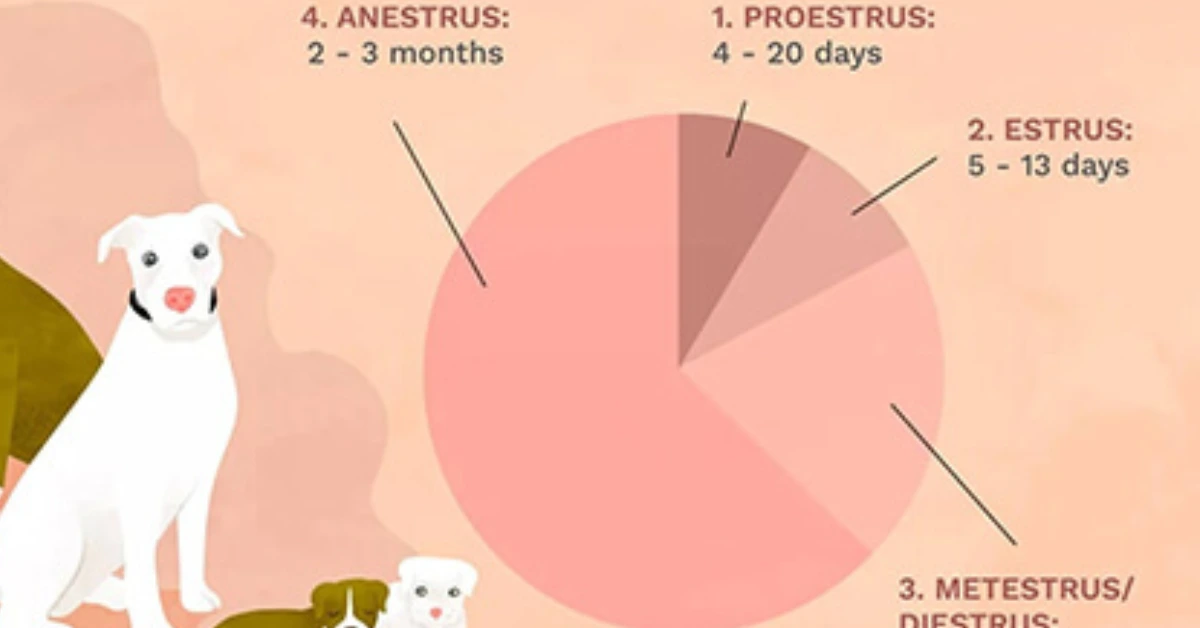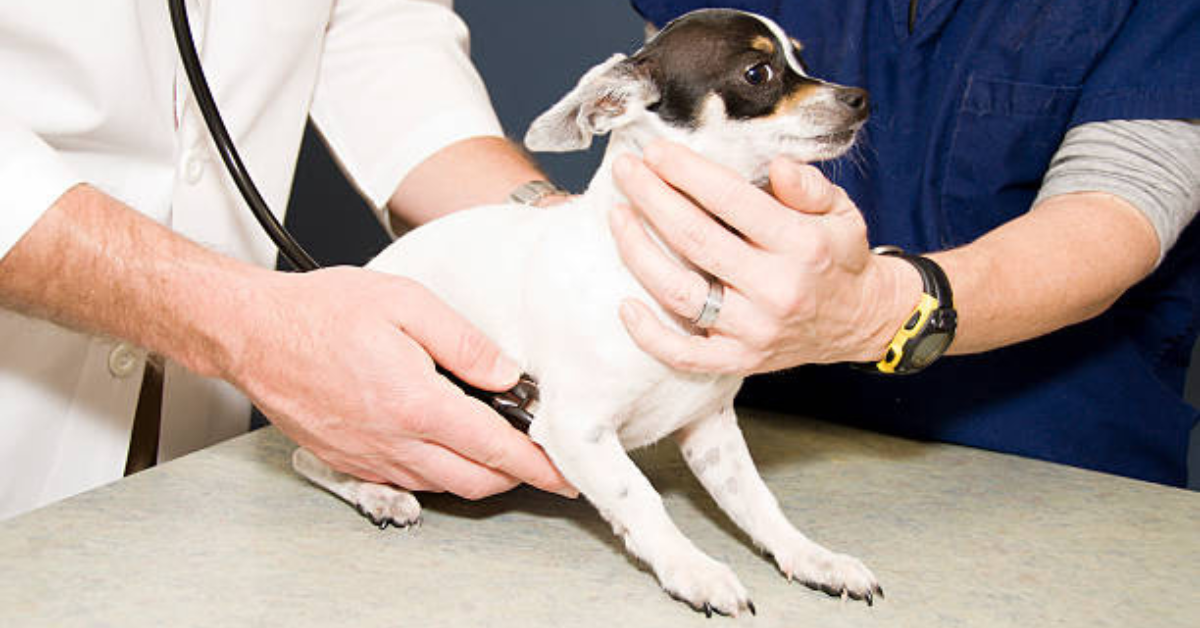Puppies of the Chihuahua breed differ greatly from one another, which is one of their most distinctive features. There are variations in the hair length, head shape, and color of Chihuahuas. There is a Merle chihuahua or even a Blue one!
When shopping for a new Chihuahua, many prospective owners search for uncommon color and marking combinations; among the most distinctive and sought-after coat patterns are Merle Chihuahuas.
Merle is the name for a speckled or mottled coat pattern; it is also occasionally referred to as “dapple” in other breeds. The dog’s skin and base coat are also covered in the design. But Merle Chihuahuas are much more than what first meets the eye.
Advertisement
This post will explain everything you didn’t know about Merle Chihuahuas, from the pattern’s recent controversy to the trait’s erratic past. Let’s see how many of these 10 Merle Chihuahua facts you were unaware of.
1. Merle Is A Gene Modifier
The Merle coat pattern on Chihuahuas is more than just a stunning and distinctive feature. In reality, merle is a gene modifier. A gene that modifies the expression of other genes is known as a gene modulator.
This implies that coat color is not the only trait influenced by the Merle gene. The Merle gene frequently affects a dog’s skin pigment, causing light and dark patches to show through the coat. The gene may also have an impact on eye color.
2. The Exact Age Of Merle Chihuahuas Is Unknown
The length of time that the gene has been present in Chihuahuas is a topic of discussion among the Merle community.
Some claim that the Merle color gene has only been found in Chihuahuas for the last 15 years, whereas others trace the gene back 70 years, to the 1940s.
The literature on Merle Chihuahuas is lacking, which is problematic for this discussion. Very few, if any, scientific publications exist that date the pattern’s creation.
On the other hand, most people agree that merles have existed for the past 70 years.
3. Other Dog Breeds Include Merle Gene
The Merle gene appears to have been bred into a strain of Chihuahuas sometime in the 1940s.
Many breeds, including Great Danes, Australian Shepherds, and Dachshunds, naturally carry the Merle color gene.
A common belief is that the Merle gene was included in the lineage by crossing a Chihuahua with a breed recognized for the characteristic, given there are no documented instances of Merle Chihuahuas before the 1940s.
4. Merle Chihuahuas Can Have Blue Eyes
You did indeed read that right. There are Merle Chihuahuas with blue eyes and those with just one blue eye.
We refer to this phenomenon as heterochromia. A Chihuahua that has one or more blue eyes will be more sun-sensitive.
Regrettably, there are some undesirable health effects associated with the Merle gene modification.
Merle Chihuahuas are more susceptible to visual and hearing issues. These problems won’t go away as the puppy gets older; they will exist from the time of birth.
A Merle Chihuahua is more prone to sunburns and UV rays due to its pale skin pigmentation.
As a result, a Merle Chihuahua is more likely than a regular Chihuahua to develop skin cancer.
5. Some Canine Groupes Don’t Recognize Merle Chihuahuas
The Merle Chihuahua was regarded as purebred and allowed to compete in shows until 2010.
But in June 2010, Merle Chihuahuas were no longer recognized as purebred by the UK Kennel Club and the Canadian Kennel Club. Merle Chihuahuas are therefore no longer eligible for registration with these organizations.
Under certain conditions, Merle Chihuahua dogs can still be registered with the American Kennel Club.
This declaration about Merle Chihuahuas was released by the Chihuahua Club of America.
Put another way, although they believe there are more moral breeds that a prospective Chihuahua owner may choose, they will nevertheless register Merle Chihuahuas.
6. Something Called Gost Merle Exist
Ghost Merles may result from a Merle Chihuahua’s mating with a cream or sable-colored Chihuahua. Ghost Merles, sometimes called cryptic or concealed Merles, are Merle gene carriers who do not exhibit the Merle coat pattern.
Owners of pets are unable to discern at all that their ghost Merle is a Merle Chihuahua. The double Merle litter will be saddled with terrible health problems if the ghost Merle unintentionally breeds with another Merle.
Thus, you ought to have your Chihuahua genetically checked if you think the dog might be a ghost Merle.
You should note that your ghost Merle Chihuahua is Merle if you can register him or her, even if the markings are invisible or hardly noticeable.
By doing this, you may be sure that you are raising your Chihuahua with integrity and accepting responsibility for its special qualities.
7. It is Never Advisable to breed Merle Chihuahuas Together.
It is never acceptable to cross two Merle Chihuahuas to create Merle puppies for the sake of moral breeding standards. When two Merles are bred together, a litter of “double Merles” is produced. Some Double Merles will have shorter lives than a typical Chihuahua, and they will always have problems with their eyes and ears.
Breed your Merle Chihuahua with a regular Chihuahua if you want to.
Since the Merle gene is dominant, around half of every litter of puppies will be Merles. The Merle gene is most noticeable in blue coat colors, chocolate, solid black, and black-and-tan.
8. Merle Chihuahuas Are Known to Have Health Issues
A Chihuahua with blue eyes will be more sensitive to sunlight. This Chihuahua breed also experiences other undesirable health consequences as a result of the Merle gene modification. For instance, compared to other breeds and varieties, these Chihuahuas have a much higher likelihood of developing hearing and vision issues.
9. The Kennel Club has something to say about Merle Chihuahuas.
There is no denying that the Kennel Club has an opinion regarding the Merle Chihuahua. When it comes to the Chihuahua dog breed, merle is occasionally seen as an undesirable color. This is the reason the Kennel Club will no longer permit a dog owner to register a Merle Chihuahua in the absence of written proof that the color has been consistently well-established over time. Only a select few breeds are eligible to have Merle registrations accepted. The American Kennel Club does think that certain Merle breeds are more moral, as we mentioned earlier.
10. Merle Chihuahua Temperament
Merle and regular chihuahuas have similar characteristics, despite their coat color. They exude confidence, are gregarious, and have a hint of a feist. They are quite endearing due to their small size and mannerisms. Nonetheless, if you own children or any larger dog breed, it is not a good idea to purchase a Merle chihuahua.
Your merle chihuahua will require close care because she tends to become violent. We advise you to begin training your Merle chihuahua at a very young age because of this.
Never undervalue these little critters’ aggression—a bite from one can cause serious harm. All colors of chihuahuas generally tend to bark and nip a lot. This can occasionally lead to an assault by a larger dog, which can cause serious harm.
To prevent your small dog from developing some undesirable habits, such as excessive barking, barking at night, biting, becoming overly attached, etc.
Socialization from an early age is essential for being good with youngsters and other dogs in the dog park.
Merle chihuahuas also possess an excess of vigor. Therefore, you need to regularly exercise them to exhaust them to help them release that additional energy.
Last Word
Make the time to learn everything there is to know about merle chihuahuas, regardless of whether you want to show them off or just have a pet that you can love and appreciate.
Before adopting a merle chihuahua, you should consult your veterinarian, as well as speak with reputable breeders and other owners of the breed.
Nonetheless, getting a Merle chihuahua is a wise decision. Your Merle chihuahua will make a wonderful pet if given the right attention, training, and diet.
YOU MAY ALSO LIKE:
Blue Chihuahua-A Breed Complete Guide
39 Chihuahua Colors And Patterns- A Complete Guide
Brindle chihuahuas- A Complete Guide
Advertisement



